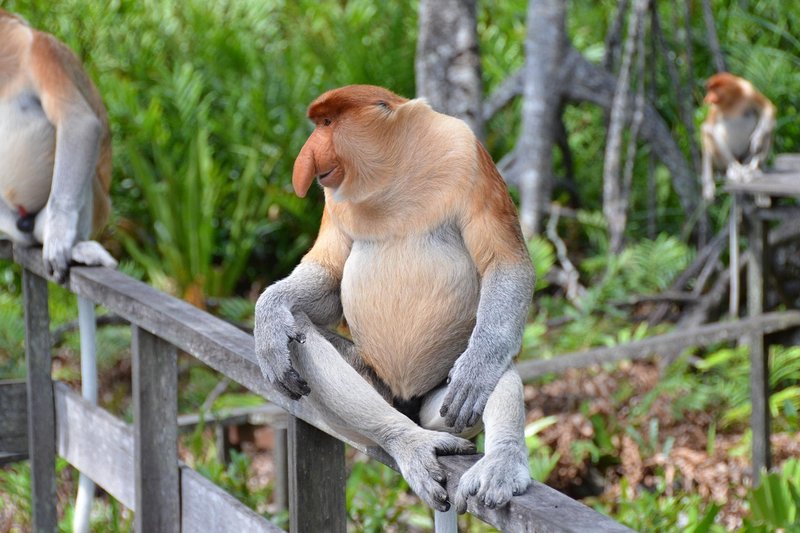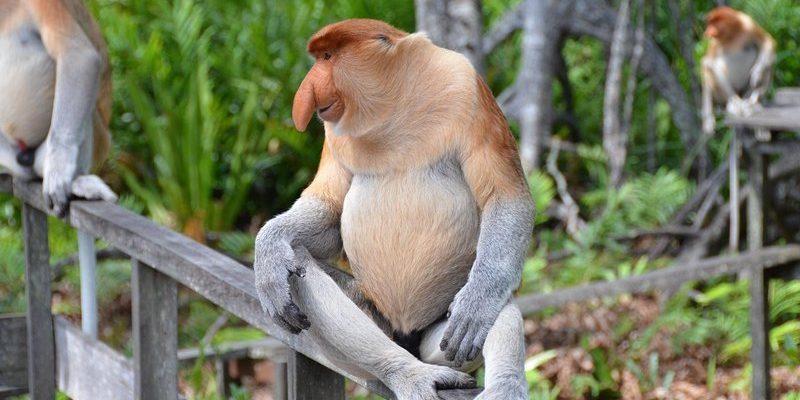
These monkeys are often seen in groups, foraging on leaves, fruits, and seeds. Their presence is not just a quirky addition to the forest; they have significant ecological responsibilities. Much like a gardener tending to a landscape, the proboscis monkey helps maintain their habitat, ensuring the ecosystem thrives. Let’s dive deeper into their role and explore why conserving this species is so important.
Understanding the Proboscis Monkey
Proboscis monkeys are native to the forests of Borneo and Sumatra, particularly in areas with abundant rivers and mangroves. They’re known for their unique nose, which can grow quite large and is thought to attract mates. Interestingly, the larger the nose, the more appealing the monkey might be to potential partners.
These monkeys are social creatures, traveling in groups typically led by a dominant male. This structure helps to enhance their survival. When one member of the group spots a predator—a snake, a large bird, or maybe a human—they can use their calls to alert the others. In this way, they act as a sort of early warning system for the entire group, demonstrating how interconnected their social structure is.
You might be wondering how they manage to feed themselves in such a competitive environment. Proboscis monkeys primarily eat young leaves, fruits, and seeds. They’re particularly fond of plants that grow near water sources, which is why they thrive in mangroves and riverine forests. This dietary preference ties them closely to the health of their ecosystem.
The Proboscis Monkey and Plant Life
One of the most significant contributions of the proboscis monkey is its role in seed dispersal. As these monkeys munch on fruits, they consume the seeds within and later excrete them in different locations. This behavior helps to spread various plant species, allowing them to grow in new areas.
The concept is simple: when proboscis monkeys move from tree to tree, they inadvertently help maintain the forest’s biodiversity. By promoting the growth of various plants, they assist in creating a vibrant ecosystem that can support many other species. This means that the health of the proboscis monkey population directly impacts the health of the forest.
Moreover, their feeding habits can help to prune trees and manage plant overgrowth. When they eat the leaves of specific plants, they help balance the forest structure, ensuring that no single species dominates the landscape. Think of them as nature’s gardeners, actively shaping their environment for the better.
Predator and Prey Dynamics
In the delicate dance of ecosystems, every species plays a role. Proboscis monkeys, often preyed upon by larger predators like clouded leopards and pythons, are an essential food source within their habitat. Their presence supports these predator populations, helping to maintain a balance in hunting and foraging.
Interestingly, the unique structure of their social groups helps minimize predation risk. When one monkey detects danger, it alerts the group, allowing them to escape. This vigilance allows for higher survival rates, ensuring that the next generation of proboscis monkeys can thrive, continuing the cycle.
This predator-prey dynamic highlights how each species is interconnected. If proboscis monkeys were to decline in number, it would not only affect the plants they help disperse but also the predators that rely on them for food. The ripple effect could lead to larger ecological imbalances within their habitat.
Proboscis Monkeys and Water Quality
Proboscis monkeys are often found near rivers and streams, where they often engage in social grooming and play. Their habitat choices are influenced by the availability of fresh water. Healthy populations of these monkeys can indicate clean water sources because they require freshwater vegetation.
By keeping the vegetation around water sources healthily pruned, they prevent erosion and help maintain water quality. This action is crucial because clean water is essential for not only the monkeys but also the myriad of other species that rely on these waterways for survival.
Here’s the thing: if proboscis monkeys were to disappear, we could see a decline in water quality as vegetation overgrows and erodes banks. This would lead to habitat destruction for countless other species, underscoring the interconnected web of life that consists of these fascinating animals.
The Importance of Conservation
Unfortunately, proboscis monkeys are facing several threats that jeopardize their survival. Habitat destruction due to logging and palm oil plantations is a significant concern. As the forest shrinks, these monkeys lose their homes, food sources, and ultimately their future.
Conservation efforts aim to protect their habitats and ensure their survival. By establishing protected areas and promoting sustainable land use, we can help safeguard these unique animals. Supporting local communities in developing eco-friendly practices can also create a win-win situation. For example, those communities can thrive economically while maintaining the health of their surrounding ecosystems.
Ultimately, conserving proboscis monkeys isn’t just about saving one species; it’s about preserving a whole ecosystem. When we protect them, we help to ensure that the larger community of plants and animals continues to thrive, leading to a healthier planet.
What You Can Do to Help
Feeling inspired to make a difference? Here are a few actions you can take to support the conservation of proboscis monkeys and their habitat:
- Support Conservation Organizations: Many groups focus on preserving the habitats of proboscis monkeys. Donations or volunteer work can make a significant impact.
- Educate Others: Sharing what you learn about proboscis monkeys can help raise awareness, which is crucial for conservation efforts.
- Make Eco-Friendly Choices: By choosing sustainable products, you can help reduce deforestation and habitat destruction.
- Visit Thoughtfully: If you travel to see these monkeys, choose eco-tourism options that support local conservation efforts.
Every small action counts. Together, we can create a wave of support for these unique creatures and ensure they remain a vibrant part of their ecosystem.
In conclusion, the proboscis monkey is not just a quirky animal with a big nose; it plays an essential role in maintaining the health of its ecosystem. From seed dispersal to indicating water quality, these remarkable creatures are vital to their habitat’s balance. By understanding and protecting them, we not only help this species but also contribute to the health and diversity of our planet. Let’s rally for conservation and work together to ensure that proboscis monkeys—and the ecosystems they inhabit—thrive for generations to come.

